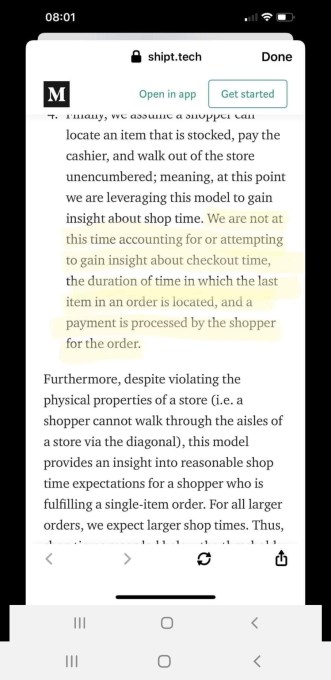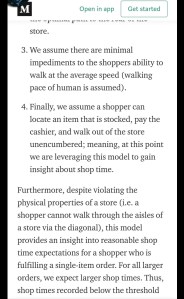Americans and other global citizens are increasingly self-employed, thanks to great software, the need for flexibility, and because skilled services especially can pay fairly well, among other reasons.
In fact, exactly one year ago, the Freelancers Union and Upwork, a digital platform for freelancers, released a report estimating that 35% of the U.S. workforce had begun freelancing. With COVID-19 still making its way around the country and globe, prompting massive and continued job dislocation for many tens of millions of people, that percentage is likely to rise quickly.
Unsurprisingly, savvy startups see the economic power of these individuals — many of whom aren’t interested in managing anyone or anything other than the steady growth of their own businesses. A case in point is Collective, a 2.5-year-old, 20-person San Francisco-based startup that’s been quietly building back office services like tax preparation and bookkeeping for what it dubs “business of one” owners, and which just closed on $8.65 million in seed funding.
General Catalyst and QED Investors co-led the round, along with a string or renowned angel investors, including Uber cofounder Garrett Camp, Figma founder Dylan Field, and Doordash executive Gokul Rajaram.
We talked yesterday with cofounder and CEO Hooman Radfar about Collective’s mission to “empower, support and connect the self-employed community” — and what, exactly, it’s proposing.
TC: You previously founded a company and, even before it sold to Oracle in 2016, you had jumped over to VC, working with Garrett Camp at his startup studio Expa. Why shift back into founder mode?
HR: What I saw throughout across AddThis and Expa and my angel investing is that managing finances is hard. Accounting, taxes, compliance — all that set-up as a small business is annoying.
Two years ago, [Collective cofounder] Uger [Kaner] came into Expa and he basically pitched me on a startup-in-a-box-type program that we were talking about building from an incubation perspective, but [with more of a pointed focus on back office issues]. He’s an immigrant like me, and because he didn’t quite understand the system, he wound up having tax penalties — penalties that are even worse when you’re a freelancer. Some startups have come up with a bespoke version of what we offer, but we were like, ‘Why do they have to do it?’ These are commodities, but if you put them together in a platform, they can can be powerful.
TC: So is what you’ve created proprietary or are you working with third parties?
HR: Both. We’re an online concierge that’s focused on the back office as the core, meaning accounting and tax services. We also form an S Corp for you because you can save a lot of money [compared with forming a business as an LLC, which features different tax requirements]. So there’s an integration layer plus a dashboard on top of that. If you’re an S Corp, you need to have payroll, so we have partnership with Gusto that comes with your subscription. We have a partnership with Quickbooks. We work with a third party on compliance. Our vision is to make this easy for you and to set this on autopilot because we understand that time is literally money.
TC: How much are you charging?
For taxes, accounting, business banking, and payroll, for the core package, it’s $200 a month. We are piloting bookkeeping and a fuller service package that’s probably [representative of] the direction we’ll head over time, and that will be an additional fee.
TC: How can you persuade these businesses of one that it’s worth that cost?
HR: There are almost three million people in the U.S. who [employ only themselves and] are making more than $100,000 a year and if you think about how many of these [different products] they are already using, it’s a great deal. Quickbooks and Gusto is cheaper with us. You see savings through expensing. The magic is really running your S Corp the right way. Part of that is normal income tax, but you also have a distribution and it’s taxed differently than an income — it’s taxed less. So we pull in salary data and look at expenses and across states, and say, ‘This is what we’d recommend to you based on how your cash flow is coming in, so you recognize this distribution in a compliant way.’
TC: Interesting about this useful data that you’ll be amassing from your customers. How might you use it?
HR: Our first concern is making sure the right people are seeing it [meaning we’re focused on privacy]. But there’s a lot we can do with the aggregation of that data once we’ve earned the right to use it. Among the things we could do, theoretically, including creating a new level of scoring. If you’re a business of one, for example, it’s very difficult to get mortgages and loans, because credit agencies don’t have the tools to assess you. But if we have your financial history for years, can we represent that you’re a great person, you have a great business.
Another interesting direction as we reach more members — we’ll get to 2,000 soon — would be to use our power as a collective to get our members less expensive insurance, [help facilitate] credit, [help them with a] 401(k).
TC: There are a lot of other things you can get into presumably, too, from project management to graphic design . . .
HR: Right now, we’re want to make sure our core service is nailed.
Think about the transparency and peace of mind that Uber brought to ride-sharing, or that Uber Eats brings to food delivery. You know when something is cooking, when it’s on its way, when it’s arriving. We’ve gotten used to that level of transparency and accountability with so many things, but when it comes to accounting, it’s not there and that’s crazy. We want to change that.
TC: Going after “businesses of one” means you’re addressing a highly fragmented market. What kinds of partnerships are you striking to reach potential customers?
HR: We’re having those conversations now, but you can imagine neo banks make sense, along with vertical marketplaces for nurses and doctors and realtors and writers. There are a lot of possibilities.
Pictured, left to right, Collective’s cofounders: CTO Bugra Akcay, CEO Hooman Radfar, and CPO Ugur Kaner.




